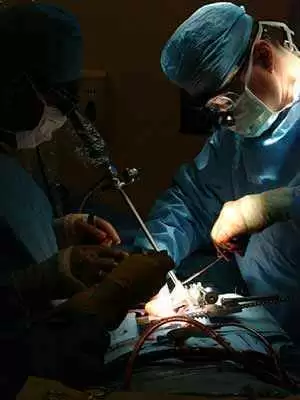People with celiac sprue, also called celiac disease, cannot tolerate the protein gluten in their diet. Gluten is present in grains like wheat, barley, and rye. When gluten is ingested by a celiac patient, it sets off an inflammatory reaction that damages the small intestine, leading to malabsorption, an autoimmune-like response, and many other complications. The only effective therapy for celiac disease is complete dietary exclusion of gluten. However, the ubiquitous nature of gluten poses a constant threat to celiacs, and a majority of celiac patients who adopt a restrictive diet still exhibit structural and functional gut abnormalities.
Celiac.com Sponsor (A12):
"Non-dietary therapies that allow celiac patients to safely incorporate low-to-moderate levels of gluten into their daily diet would be of considerable benefit," explains study leader Dr. Chaitan Khosla, from Stanford University and Celiac Sprue Research Foundation. "Having demonstrated earlier that certain types of enzymes can detoxify gluten, our laboratory set out to devise an optimal oral enzyme therapy for celiac sprue by borrowing from nature. In germinating barley seed, gluten serves as a nutritious storage protein that is efficiently digested by enzymes. One enzyme, EP-B2, plays a crucial role in this process by breaking gluten proteins after glutamine residues, which comprise one-third of all amino acid residues in gluten."
Dr. Khoslas group used recombinant bacteria to produce a form of EP-B2 that only activates under acidic conditions similar to the conditions found in the human stomach. The researchers demonstrated that EP-B2 efficiently digested gluten protein under gastric conditions and, importantly, EP-B2 was most specific for those parts of gluten that are known to trigger celiac pathogenesis. In a second study, the researchers went on to devise an even more potent double enzyme therapy for detoxifying gluten.
EP-B2 was tested in combination with another well-characterized enzyme called PEP that breaks gluten protein after proline residues. Like glutamine, proline is also abundant in inflammatory gluten peptides. At very high gluten loads, where neither PEP nor EP-B2 alone could detoxify gluten quickly enough to prevent inflammation, a PEP and EP-B2 combination completely abolished gluten immunotoxicity within ten minutes under simulated gastric and duodenal conditions.
In this tag-team therapy, EP-B2 first cleaved gluten into small pieces under gastric conditions that were then easier for PEP to fully detoxify under duodenal conditions. "Our results suggest that recombinant EP-B2 should be effective as supportive therapy to help celiacs cope with the hidden gluten in everyday life, and that a two-enzyme cocktail containing PEP and EP-B2 may even allow celiacs to resume a more normal diet in the future," offers Dr. Khosla.
References:
Seigel et al.
The researchers include Matthew Siegel, Michael T. Bethune, Jiang Xia, Alexandre Johannsen, Tor B. Stuge, and Peter P. Lee of Stanford University in Stanford, CA; Jonathan Gass, Jennifer Ehren, Gary M. Gray, and Chaitan Khosla of Stanford University in Stanford, CA and Celiac Sprue Research Foundation in Palo Alto, CA. This research was supported by a grant from the National Institutes of Health (R01 DK63158 to C.K. and Mary Hewitt Loveless, MD Pilot-Project Grant to P.P.L.).
Siegel et al.: "Rational Design of Combination Enzyme Therapy for Celiac Sprue." Publishing in Chemistry & Biology 13, 649–658, June 2006 DOI 10.1016/j.chembiol.2006.04.009 www.chembiol.com
Bethune et al.
The researchers include Michael T. Bethune, Yinyan Tang, and Chaitan Khosla of Stanford University in Stanford, CA; Pavel Strop of Howard Hughes Medical Institute and Stanford University in Stanford, CA; Ludvig M. Sollid of University of Oslo and Rikshospitalet University Hospital in Oslo, Norway. This research was supported by R01 DK063158 to C.K. M.T.B. is a recipient of a National Institutes of Health Cellular and Molecular Biology Training Grant through Stanford University.
Bethune et al.: "Heterologous Expression, Purification, Refolding, and Structural-Functional Characterization of EP-B2, a Self-Activating Barley Cysteine Endoprotease." Publishing in Chemistry & Biology 13, 637–647, June 2006 DOI 10.1016/j.chembiol.2006.04.008 Open Original Shared Link.
Contact: Heidi Hardman
Tel: (617) 397-2879








Recommended Comments